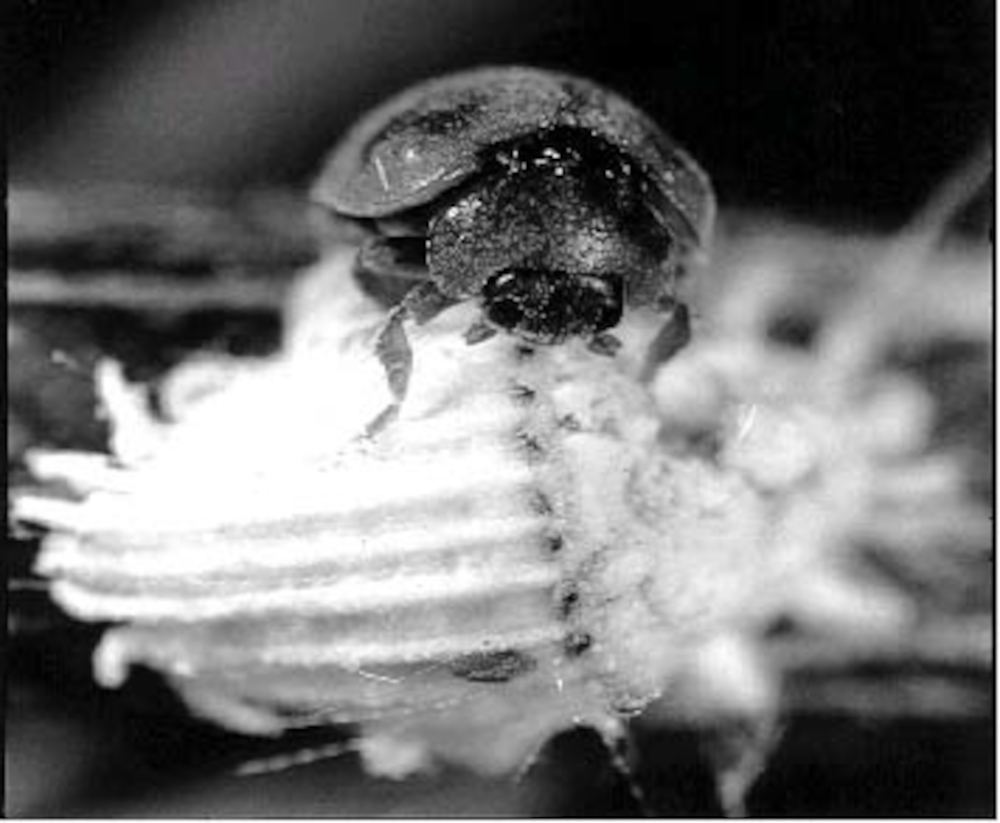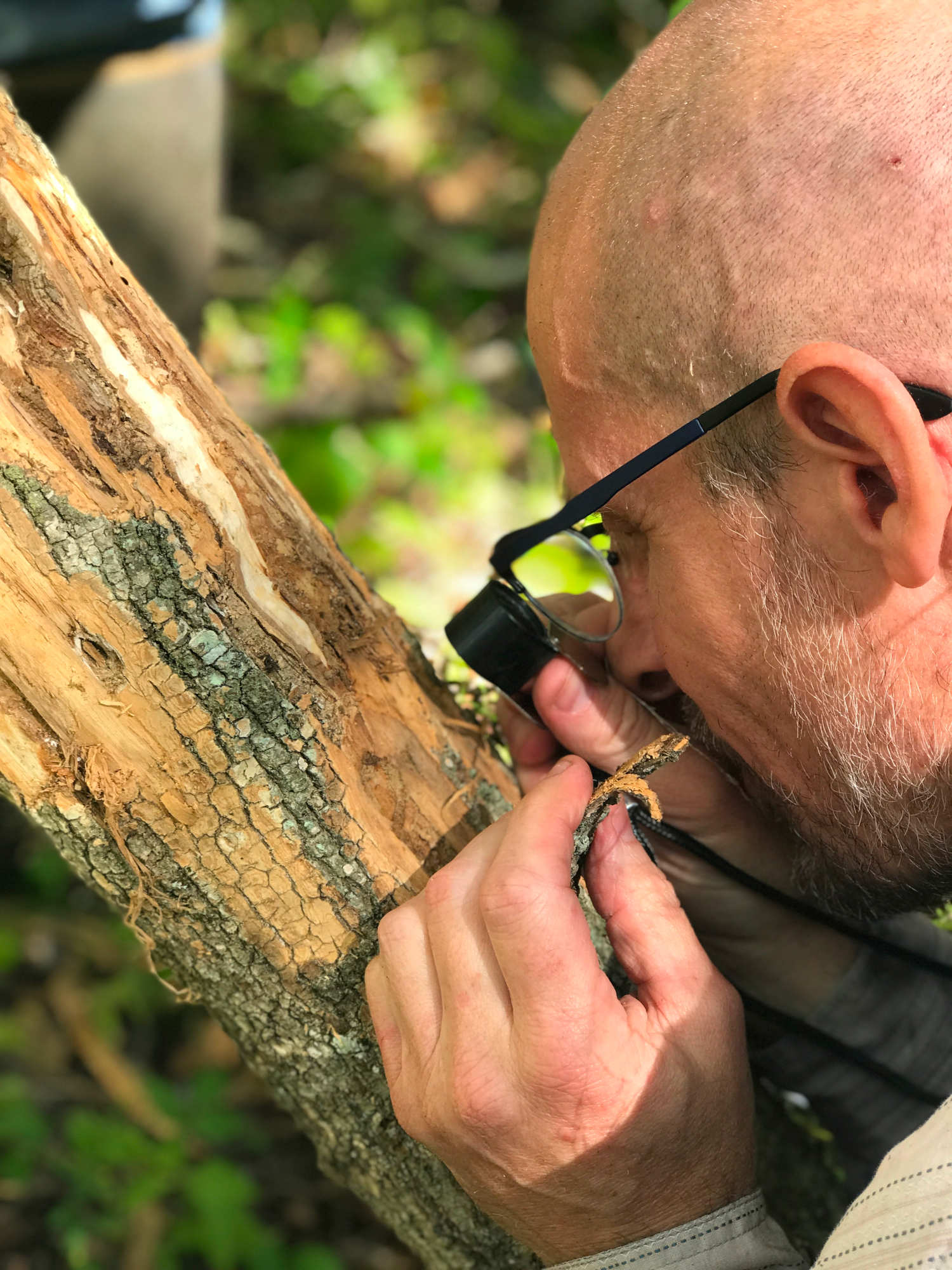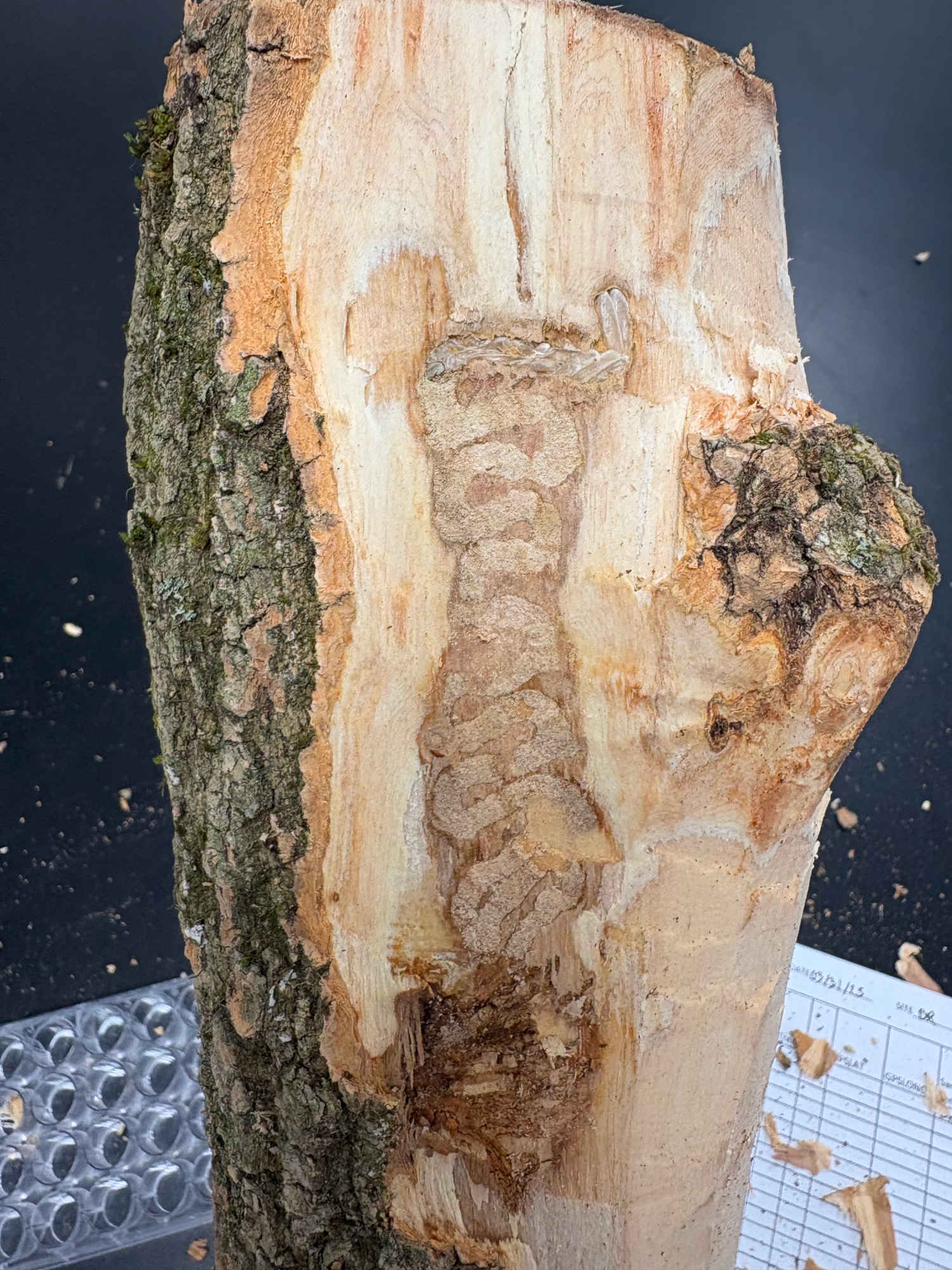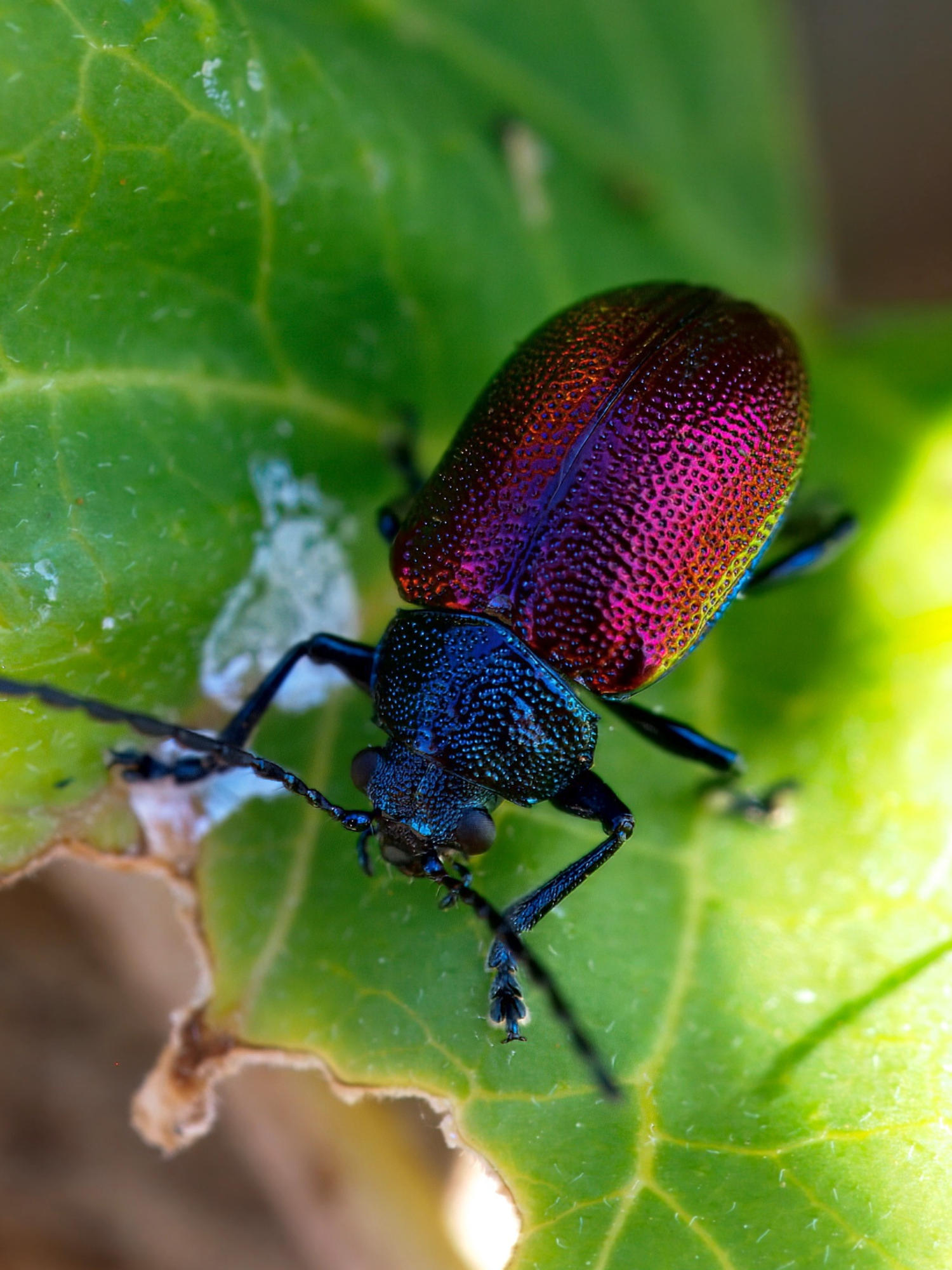In 1868, workers at a nursery in Menlo Park, California, noticed an infestation of hairy white bugs on their acacia trees. It was the beginning of a plague: Over the next two decades, cottony cushion scale insects feasted on ornamental plants and devastated California’s fledgling citrus industry. Growers tried everything they could think of to fight the bugs — even fumigating trees with hydrogen cyanide — but nothing worked.
Then, in 1888, United States Department o…
In 1868, workers at a nursery in Menlo Park, California, noticed an infestation of hairy white bugs on their acacia trees. It was the beginning of a plague: Over the next two decades, cottony cushion scale insects feasted on ornamental plants and devastated California’s fledgling citrus industry. Growers tried everything they could think of to fight the bugs — even fumigating trees with hydrogen cyanide — but nothing worked.
Then, in 1888, United States Department of Agriculture entomologist Albert Koebele traveled to Australia — the scale bugs’ homeland — where he identified a predatory beetle that attacked the scale bugs on their home turf. He shipped them back to the U.S., hoping that these insects, honed by evolution to consume scale bugs, could succeed where human interventions had failed.

In 1888, entomologist Albert Koebele identified the vedalia beetle as a predator of the cottony cusion scale that plagued California’s citrus trees. Here, the beetle is shown feeding on a scale insect.
Visual: USDA/Wikimedia Commons
It worked. In April 1889, scientists unleashed the first of these six-legged attackers in an orchard near Los Angeles, and by the end of the year, California’s plague of cottony cushion scale had ended. It was one of the first big victories for a technique now called classical biological control, which most often involves scientists using one kind of non-native organism to keep another invasive species in check. (The method can also be carried out against native pest species, but tends to be less effective.) “This project established the biological control method like a shot heard around the world,” the late entomologist Paul DeBach wrote in his 1974 book “Biological Control by Natural Enemies.”
Invasive species are a major threat not only to agriculture and human health, but to biodiversity as well: One 2023 report estimated that invasive species played an important role in 60 percent of known plant and animal extinctions.
In some cases, classical biological control has helped combat that threat, aiding in the management of hundreds of invasive species globally. For most of the 20th century, the technique was frequently touted as a risk-free, ecologically friendly alternative to pesticides and other chemicals. But biocontrol has also been dogged by high-profile failures, in which the biocontrol agents started munching on native plants or animals. Some types of native Hawaiian snails, for example, were driven to extinction by the predatory rosy wolfsnail, introduced as a biocontrol agent in the 1950s. In New England, parasitic flies introduced to control invasive cabbage pests also killed native silk moths. Weevils introduced to eat invasive thistles across the country also consumed native thistles, including the threatened Pitcher’s thistle.
In the late 1980s into the 1990s, a handful of influential studies drew attention to the harms done to native species by some biocontrol agents. “I think that that caused sort of a paradigm shift in how people thought about biocontrol,” said George Heimpel, a biological control researcher at the University of Minnesota. One consequence was that biological control became much more heavily regulated, and decision-making by governmental agencies — in the U.S., biocontrol largely falls under the purview of the USDA’s Animal and Plant Health Inspection Service, or APHIS — came to be guided largely by risk. Concurrently, new biocontrol agents have gotten safer, with fewer recorded attacks on non-target species, but they have also become rarer: In recent decades, the number of agents released to control insect pests and invasive weeds has declined sharply worldwide, according to published studies.

SIGN UP FOR NEWSLETTER JOURNEYS: Dive deeper into pressing issues with Undark’s limited run newsletters. Each week for four weeks, you’ll receive a hand-picked excerpt from our archive related to your subject area of interest. Pick your journeys here.
In that decline, some researchers now see regulatory overcaution — and missed opportunities. Many people think “maybe we’ve gone a little too far, let that pendulum go a little bit far to the risk-averse side,” said Heimpel. In a paper published last year, he and several colleagues argued that conservationists may miss out on opportunities to control the spread of invasive species, which are themselves a huge threat to native ecosystems. Instead, Heimpel and other scientists, including Mark Wright, an insect ecologist at the University of Hawaii at Manoa (who is not an author on the recent paper), are now advocating for a middle ground, through a framework that balances risks and benefits.
“Everyone always thinks about the negative risks of doing biocontrol,” said Wright. “They’re not wrong. But I also try to emphasize looking at the risks of doing nothing.”
The increased attention to risk has certainly had some benefits, researchers said. Hariet Hinz, the global director for invasive species at CABI, a nonprofit formerly known as the Center for Agriculture and Biosciences International, said that there have been major improvements in safety testing of biological control agents since the 1990s. Prior to release, researchers now carefully assess potential off-target effects of each agent — “not just throwing out agents at the dozen, which happened in the 70s,” she said.
Once researchers have identified a potential biocontrol agent — one that attacks the target and is not already known to attack other species — they make a list of all the native or commercially important species that could accidentally end up in the line of fire. Researchers hoping to import a weed-chomping insect might, for example, compile a list of plants that are genetically or chemically similar to the target weed, and so potentially vulnerable to the proposed biocontrol agent.
Many people think “maybe we’ve gone a little too far, let that pendulum go a little bit far to the risk-averse side.”
Researchers then carry out a battery of tests to determine whether there are conditions under which the agent will eat or lay eggs on these non-target plants, a process called host range testing. Then they send the test results, along with an environmental impact assessment, to APHIS for review. APHIS consults with an expert panel of government and academic scientists, other government agencies, Native American communities, and the public to decide if (and where) the agent can be released.
All told, pre-release testing and permitting can take between three and 15 years, and cost $1 million to $2 million. Some researchers have criticized the U.S. permitting process, citing changing regulatory requirements, long delays, perceived inconsistencies in decision making, and poor inter-agency communication.
It’s “a long, convoluted, crazy process,” said Wright. “I’m very much in favor of a good, careful permitting process, but sometimes it just becomes really frustrating.” APHIS did not respond to multiple requests for comment, including messages sent before the start of the government shutdown. On its website, the agency praises biocontrol as “a very cost effective and environmentally sound method of pest control,” and describes its regulatory program as “committed to safe and effective biological control including monitoring and evaluation as integral parts of all implementation projects.”
“This approach is crucial for the success and future of biological control as a management strategy,” the agency adds.

Colleagues of biocontrol researcher Quentin Paynter release a type of gall wasp to control the invasive Acacia longifolia plant in New Zealand. Scientists in the country carry out years of post-release monitoring of the impacts of introduced biocontrol agents and nationwide surveys to assess whether agents are attacking any species besides the target weed or pest. Visual: Courtesy of Quentin Paynter
Researchers familiar with biocontrol regulation in Canada and Europe have also described rigorous safety testing processes prior to release.
Haley Catton, a research scientist in crop entomology working for the Canadian government, noted that the public perception of biological control as somewhat reckless is likely shaped by a few problematic organisms that were released decades ago (but still persist in the environment), rather than reflecting the scientific rigor and regulations that characterize biological control today.
And indeed, instances of unwanted effects on native species appear to have fallen as biological control has become more highly regulated. In a 2020 paper, Hinz and her colleagues found that the percentage of weed biocontrol agents that have been caught attacking the wrong species has fallen from nearly 20 percent for agents released before 1960, to about 5 percent for those released between 2009 and 2016. “That includes any kind of nontarget attack,” she said, including when the agent is “just nibbling on a plant but not surviving.”
All told, pre-release testing and permitting can take between three and 15 years, and cost $1 million to $2 million.
But some scientists are also concerned that this risk aversion could lead to major opportunity costs. In another study, Hinz, along with co-authors from the U.S. and Canada, identified several examples of historically successful biocontrol agents that would likely not have been approved for release under today’s stricter regulations.
And while biocontrol does carry some risks, researchers noted that other approaches for managing invasive species, as well as the decision to take no management action at all, can also have negative consequences. Many of the alternative methods available — like herbicides and insecticides — can harm ecosystems and native species, or are simply ineffective. The cost of inaction can be high: In some cases, experts say, biocontrol agents offer a crucial tool for averting extinction. Hawaii’s wiliwili tree, or Erythrina sandwicensis, is one such success story. This tree, with its broad canopy and lavish orange blooms, is a key component of Hawaii’s endangered dry forest ecosystems. But in 2005, an invasive gall wasp arrived on the islands. The wasps laid eggs inside the trees’ tender new growth, causing defoliation and death.

A female gall wasp on a leaf with abnormal growths called galls. The wasps lay eggs inside the new growth of the wiliwili tree in Hawai’i, causing galls, and sometimes defoliation and death of the tree. Visual: Courtesy of Mark Wright

An example of galls on wiliwili tree growth. In 2008, researchers released a species of wasp that lays its eggs near gall wasp larvae so freshly-hatched young can eat the gall wasps. The intervention was effective. Visual: Courtesy of Mark Wright
In 2008, researchers at what’s now known as Hawaii’s Department of Agriculture and Biosecurity received the governmental green light to release a natural enemy of the gall wasp from its home in Africa. This enemy (another species of wasp) lays its eggs near gall wasp larvae, so that its young can eat the gall wasps as soon as they hatch. The strategy was macabre but effective.
“If we’d done nothing about the gall insects on Erythrina, they’d potentially be extinct now,” said Wright. “In fact, they were banking seeds here in seed collections, in case of that eventuality. That’s how severe it was looking.”
Researchers no longer claim that biocontrol is always benign, and indeed, many emphasized the central role of careful risk assessment. But, some argue, some risk may be acceptable when the consequences of inaction are severe enough. “I don’t think that biological control is the first solution for many invasive species, but I think there are some situations where it really may be our best bet,” said Daniel Gruner, an entomologist at the University of Maryland. Gruner studies biological control of the emerald ash borer, a beetle that is currently threatening North America’s approximately 8 billion ash trees. “In this case, I think most people have come to the conclusion that if there are some impacts on native insects, they’re likely far less than the potential gains of not seeing these ash species all go ecologically extinct,” he said.
But there are many factors that make biocontrol risk-benefit assessment a challenge. For one, risks and benefits are often very different in nature — a biocontrol agent might benefit crops while posing a risk to native insect species, pitting conservationists against farmers. Researchers must also contend with social factors, said Catton, such as varying levels of trust in science, and emotional or cultural connections to certain invasive plants and animals. “This is way bigger than the biology,” she said.

Entomologist Dan Gruner inspects an ash tree for signs of emerald ash borer infestation. The beetle is currently threatening North America’s approximately 8 billion ash trees. Visual: Angela Saenz

Damage done by an emerald ash borer. While biocontrol might impact native insects, Gruner said that in this case, most people have concluded that those impacts are likely less than the extinction of ash tree species. Visual: Lilly Woodward
Furthermore, living things are always adapting; biocontrol agents, and the environments they inhabit, could transform over time. Some researchers, including Kayri Havens, chief scientist at the Chicago Botanic Garden, noted that systematic long-term monitoring was often lacking. “Insects can evolve,” said Havens. “And faced with starvation versus developing a preference for a slightly different plant, many will evolve and develop a preference that they maybe didn’t have at the time of the initial testing.”
“We can never rule out evolution,” Gruner agreed.
Experts like Heimpel and Hinz say that while a specialist species may gradually shift its preference to a very closely related plant, jumping to consume something entirely new is very, very unlikely. “There’s no record of that happening, as far as I know,” said Heimpel. “Obviously, it could happen because obviously, the host range of insects evolves. The question, though, is: Over what time scale?”
“It’s not just one gene here that’s changing,” said Hinz. “It’s a suite of things that would need to change.” These kinds of genetic revisions happen extremely slowly, said Quentin Paynter, a weed biocontrol researcher at the Bioeconomy Science Institute, based in New Zealand: Having an agent acquire multiple genetic changes and “start leaping onto a plant that’s outside of the fundamental host range — is vanishingly rare.”
“Post-release monitoring costs a lot of money,” said Havens. “And right now we are facing a lot of budget cuts in science and ecology.”
Nevertheless, researchers agree that post-release monitoring is important, and U.S.-based scientists Heimpel and Wright said it doesn’t happen enough. “It’s a problem of funding,” said Heimpel. “It’s a lot easier to get funding for something that is still a pest, and once it’s controlled, then there’s less funding for it because it’s not a pest anymore.” And in the U.S., this problem may be getting worse. “Post-release monitoring costs a lot of money,” said Havens. “And right now we are facing a lot of budget cuts in science and ecology.”
Havens said that years or even decades of monitoring are needed to truly understand the ecological impacts of a project, and Paynter noted that these post-release assessments have helped improve the safety of future projects. In New Zealand, for example, funding supports years of post-release monitoring of the impacts of introduced biocontrol agents and even nationwide surveys to assess whether agents are attacking any species besides the target weed or pest. That work, said Paynter, has helped strengthen public trust in biocontrol projects. “Generally speaking, I think there is a lot of support in New Zealand, and that probably is because we’ve opened Pandora’s Box — we’ve done the surveys to check for non-target attack,” said Paynter.

A researcher checks on a culture of beetles at a Bioeconomy Science Institute containment facility. These beetles act as a biocontrol agent for the African tulip tree that is highly invasive in the tropical Pacific. Visual: Courtesy of Quentin Paynter

The beetle Freudeita cupripennis was imported to New Zealand from Uruguay and recently released for the biocontrol of a South American weed moth plant. Visual: Courtesy of Quentin Paynter
While Paynter said the monitoring has not found any instances of major impacts on crops or native species, occasional non-target attacks did occur, providing opportunities for researchers to improve their pre-release testing methods. “We haven’t found anything particularly bad, but we have found examples where, yes, perhaps we should have done this with our testing,” said Paynter. “We can improve it and make it more reliable.”
In the coming years, the numbers and impacts of invasive species are only expected to grow. “You can’t totally ignore the risks,” said Heimpel. “But you can’t let that stop you from addressing the problem that is there in the first place.”
Hannah Thomasy is a science journalist based in British Columbia; her work has appeared in The New York Times, Atlas Obscura, and Discover Magazine.